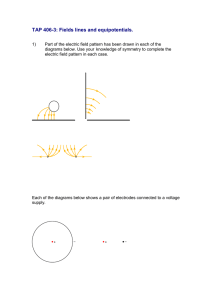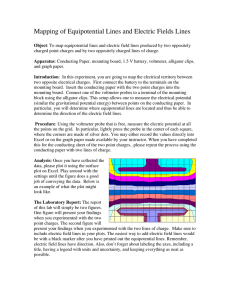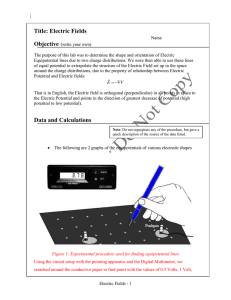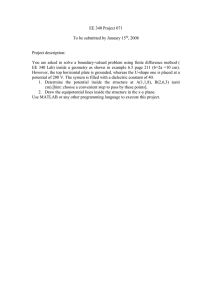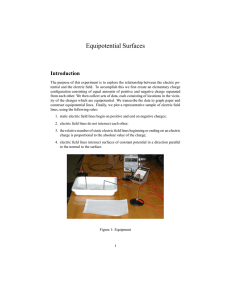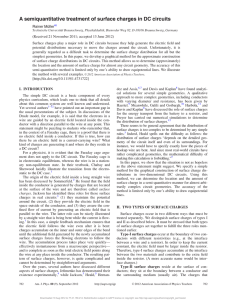NYB Equipotentials and Lines of Forces Objective: To map the
advertisement
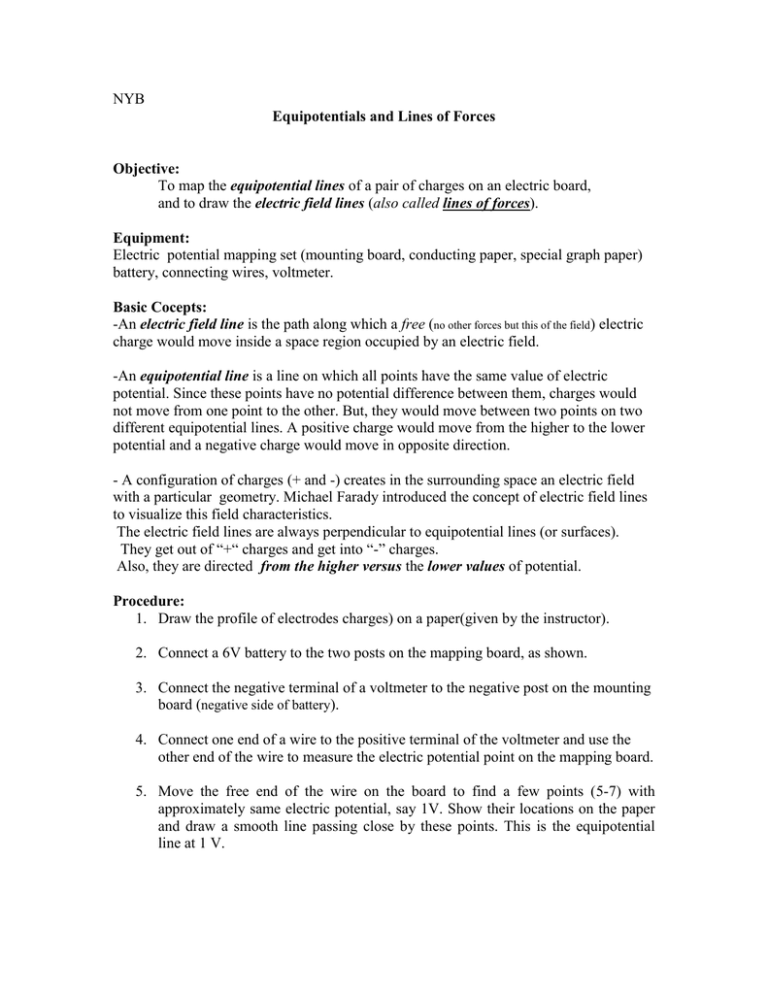
NYB Equipotentials and Lines of Forces Objective: To map the equipotential lines of a pair of charges on an electric board, and to draw the electric field lines (also called lines of forces). Equipment: Electric potential mapping set (mounting board, conducting paper, special graph paper) battery, connecting wires, voltmeter. Basic Cocepts: -An electric field line is the path along which a free (no other forces but this of the field) electric charge would move inside a space region occupied by an electric field. -An equipotential line is a line on which all points have the same value of electric potential. Since these points have no potential difference between them, charges would not move from one point to the other. But, they would move between two points on two different equipotential lines. A positive charge would move from the higher to the lower potential and a negative charge would move in opposite direction. - A configuration of charges (+ and -) creates in the surrounding space an electric field with a particular geometry. Michael Farady introduced the concept of electric field lines to visualize this field characteristics. The electric field lines are always perpendicular to equipotential lines (or surfaces). They get out of “+“ charges and get into “-” charges. Also, they are directed from the higher versus the lower values of potential. Procedure: 1. Draw the profile of electrodes charges) on a paper(given by the instructor). 2. Connect a 6V battery to the two posts on the mapping board, as shown. 3. Connect the negative terminal of a voltmeter to the negative post on the mounting board (negative side of battery). 4. Connect one end of a wire to the positive terminal of the voltmeter and use the other end of the wire to measure the electric potential point on the mapping board. 5. Move the free end of the wire on the board to find a few points (5-7) with approximately same electric potential, say 1V. Show their locations on the paper and draw a smooth line passing close by these points. This is the equipotential line at 1 V. - + - V + 6. Move to some other spot that shows another voltage (e.g. 2 volt). Repeat the same procedure; take readings to determine another equipotential line. 7. Continue to increase the potential by 1V intervals to map the whole board. You have to draw at least 5 equipotential lines (If you have time you may record 2 more lines with 0.5V and 5.5V). Then, draw a set of electric field lines (lines of force) . 8. Repeat the same procedure with the linear electrodes on the other side of mapping board. Analysis: Draw the set of equipotential lines by blue color. From the set of equipotential lines sketch the system of electric field lines; draw them by red color. Estimate the magnitude (or the strength ) of electric field in two regions of each of the two maps by using the theoretical relation with potential change. Comment on the distribution of these lines; - Are they straight or curved? - What is their direction? - Are equally dense or not? - Where is bigger and where is smaller the magnitude of electric field? - Compare your experimental findings with theoretical predictions.

